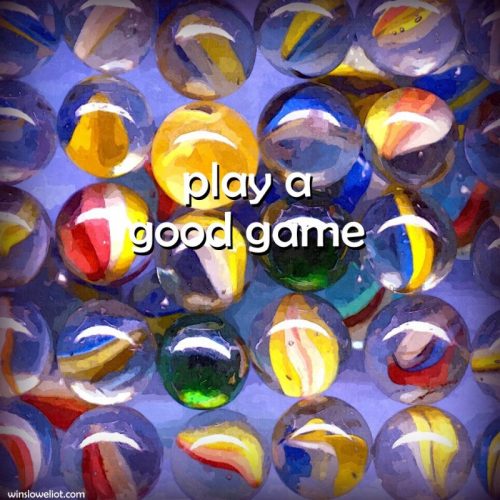
Stillness 5-22: Playing marbles was one of my favorite pastimes when I was a child. We’d draw a largish circle with sidewalk chalk, place half a dozen mibs in its center in some sort of elaborate pattern, kneel (knuckle down) on the ground, and flick the “taw”—our shooter marble—out of our fist with our thumb, trying to knock as many marbles as possible out of the ring. Any that were knocked out of the ring were ours to keep (till the end of the game). Whoever ended up with the most marbles won.
As mibsters, as we marble players are called, we took this game very seriously. But what I loved most about it was how beautiful the marbles looked. Each little glass colorful marble was like a magical crystal ball that I could use to see into the future. Truth be told, I often preferred to look each one individually in the sunshine than playing with them with other people.
Prototypes of marbles have been discovered from the beginnings of civilization. They’ve been found in Mohenjo-daro, an excavation dating back to 2500 BCE. Ovid describes the game using walnuts. There are many historical references to marbles made of clay or stone, as well as glass. It was such a popular game during the Middle Ages in Europe that some towns decreed marbles could only be played outside the town walls.
Playing is essential to our wellbeing as people, young and old. We rarely play real games anymore. Screen games aren’t the same because they’re not tactile and they’re not social. And they don’t allow for that great, focused stillness that comes over you when you knuckle down, focus totally on what you’re doing, and everything else dims into a blur around you. Playfulness is a great practice to develop stillness and joy.
